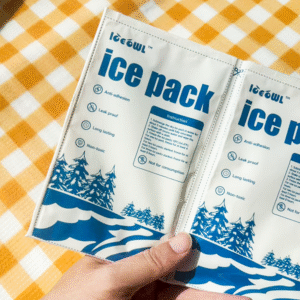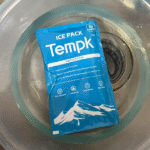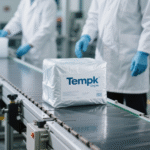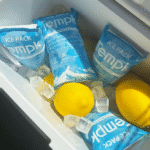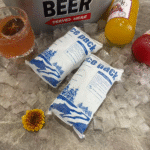Como comprar folha de gelo seco para 2025 Cadeia de frio
Introdução: Se você precisa de frete abaixo de zero confiável, comprar folha de gelo seco e construa um simples, sistema seguro. Neste guia, você aprenderá como escolher o tamanho, planejar o tempo de espera, e conhecer 2025 regras. Traduzimos termos de laboratório para linguagem simples, para que você possa agir rápido e evitar desperdícios.
-
Escolha as dimensões corretas das folhas para alimentos congelados e produtos biológicos usando transporte de longa distância.
-
Estime o tempo de espera com uma fórmula de campo rápida e palavras-chave de cauda longa relacionadas, como 72‑hora de remessa congelada.
-
Compare placas de gelo seco com bolsas de gel e materiais de mudança de fase para diferentes rotas.
-
Projete etiquetas e métodos de embalagem compatíveis que protejam a equipe e as remessas.
-
Crie um plano de implementação passo a passo que você possa executar esta semana.
Qual tamanho você deve comprar uma folha de gelo seco por 24 a 72 horas?
Resposta curta: Escolha o comprimento da folha para combinar as paredes da caixa e a espessura com o risco da rota. A maioria dos remetentes começa com folhas de 0,5 a 1,0 polegada de espessura para rotas de dois dias. Para 72 horas, adicione mais uma camada ou vá para 1.25 folhas em polegadas. Sempre teste com seu produto e isolamento reais.
Mais detalhes: Sua caixa é uma bateria para frio. Envolver o produto por todos os lados mantém pequenos vazamentos, como uma jaqueta que cabe. Se o seu cooler tiver 12 × 10 × 8 polegadas, corte ou dobre folhas para forrar cada painel, então tampe o topo. Para pistas longas, planejar um 20% buffer para atrasos. Esta abordagem atende às necessidades de cauda longa, como quantas folhas para envio em 72 horas e melhor espessura de folha para refeições congeladas.
Quando você compra uma folha de gelo seco, combine cada painel com as paredes da caixa para evitar vazamentos de calor nas bordas.
Quantas folhas você precisa ao comprar uma folha de gelo seco?
Na prática: Comece com quatro painéis de parede, um fundo, e um topo. Para uma carga útil do tamanho de uma caixa de sapatos, isso pode ter de três a seis folhas dependendo do tamanho do corte. Adicione uma folha superior extra quando você espera transferências. Esta regra simples cobre a maioria das pistas de dois dias, mantendo o peso razoável.
| Regra prática de dimensionamento | Valor típico | Quando usar | O que isso significa para você |
|---|---|---|---|
| Cobertura de parede | 4 painéis | Todas as pistas | Menos pontos quentes e temperatura uniforme |
| Cobertura superior | 1–2 painéis | 48–72 h | Adiciona “seguro” contra atrasos de correio |
| Cobertura inferior | 1 painel | Todas as pistas | Protege contra pisos quentes de caminhões |
Antes de comprar uma folha de gelo seco, esboce a cobertura da parede no papel para evitar lacunas dispendiosas.
Dicas e sugestões práticas
-
Kits de pequenas refeições: Comece com 0.5 espessura em polegadas; adicione uma folha de reforço superior para envio na sexta-feira.
-
Kits de vacina: Usar 1.0 folhas de polegadas e frascos embrulhados; isolar com uma divisória respirável para evitar rachaduras.
-
Climas quentes: Aumente a cobertura da superfície primeiro, então espessura; custa menos do que espuma superdimensionada.
Caso do mundo real: Uma marca regional de refeições adicionou uma folha superior extra durante as rotas de verão e manteve as entradas de frango abaixo de -10°C durante 60 horas. Reclamações diminuíram em dois terços sem mudança de transportadora.
Quando você deve comprar uma folha de gelo seco em vez de pacotes de gel?
Resposta curta: Use lençóis quando precisar segurar abaixo de –10°C ou precisar de isqueiro, cobertura flexível. Os pacotes de gel são ótimos para 0–5°C. Para bens abaixo de zero, as folhas proporcionam mais “cobertura das bordas” e ficam mais compactas em caixas de formatos estranhos. Isso significa menos curvas quentes e taxas de ultrapassagem mais altas em pistas longas.
Mais detalhes: Pense nos pacotes de gel como tijolos e nas folhas como cobertores. Os tijolos empilham rapidamente, mas deixam lacunas. Envoltório de cobertores. Se o seu produto for alto ou estreito, uma folha que envolve o perímetro economiza espaço. Para cargas de “duas zonas” – algumas congeladas, alguns resfriados - mantenha os pacotes de gel por cima e as folhas abraçando o núcleo congelado. Isso corresponde a pesquisas como manto de gelo seco vs pacote de gel e envio temporário misto.
Se você comprar uma folha de gelo seco para faixas abaixo de zero, envolva o perímetro primeiro e aumente o topo.
Como comprar folha de gelo seco para produtos farmacêuticos, Biologics, e vacinas
Orientação: Para frascos frágeis, evite o contato direto usando um revestimento fino entre a folha e a caixa. Escolha filmes de qualidade médica e confirme que não há derramamento de fibra. Use um padrão de embalagem “sem paixão”: paredes primeiro, produto, espaçador, então folha de cima. Gravação, muito, e espessura para preparação para recall.
| Caso de uso farmacêutico | Folha recomendada | Tempo de espera típico | O que isso significa para você |
|---|---|---|---|
| Reabastecimento clínico | 1.0 nas paredes + principal | 48–60 horas | Simples, pacote repetível |
| Centro regional | 1.25 embrulhado completo | 72 horas | Cobertura para atrasos na transferência |
| Bolsa de última milha | 0.5 embrulhado | 24–36 horas | Luz, ajuste flexível |
Clínicas que compram placas de gelo seco deve registrar códigos de lote e ciclos de uso para rastreabilidade.
Fim da vida: O que fazer depois de comprar uma folha de gelo seco
Realidade: A cadeia de frio também tem a ver com saída. Escolha folhas com etapas simples de descarte. Se estiver usando produtos químicos à base de CO₂, ventile em uma área segura. Se sua planilha for reutilizável, rotular ciclos e retirar-se em cinco a sete usos. Mantenha um breve POP na caixa para que os usuários façam a coisa certa sem adivinhar.
Equipes que compram placas de gelo seco pode adicionar uma breve nota de devolução ou descarte dentro de cada kit.
Como armazenar e manusear depois de comprar uma folha de gelo seco?
Resposta curta: Mantenha os lençóis ventilados, espaços secos e longe de salas fechadas. Use luvas para evitar lesões na pele. Não armazene perto de eletrônicos sensíveis. Treine a equipe em verificações rápidas – procure falhas, mudanças de cheiro, ou bordas úmidas antes de embalar. Substitua qualquer coisa que pareça estranha.
Mais detalhes: Trate os lençóis como uma bateria sem pressão. Eles “perdem carga” mais rapidamente no ar quente. Coloque-os em bolsas isoladas perto da linha, não no cais. Girar primeiro, primeiro a sair. Para picos de fim de semana, prepare kits com contagens impressas na sacola. Isso reduz erros e tempo de embalagem. Também cabe POP de armazém para manto de gelo seco e fluxo de trabalho de armazenamento seguro cauda longa.
Depois de comprar uma folha de gelo seco, forros de palco perto da linha em bolsas ventiladas, não no cais.
Zonas de embarque e transportadoras: Otimize ao comprar uma folha de gelo seco
Conselho: Rota primeiro, então faça as malas. Use o serviço de dois dias para zonas entre 800 e 1.600 quilômetros com cobertura total da parede. Acima dessa faixa, adicione uma folha de reforço superior ou mude para 1.25 polegada. Para pistas desertas, considere coletas noturnas. Grave aprovação/reprovação por pista para ajustar pacotes em vez de adivinhar toda semana.
| Distância da Zona | Serviço Típico | Pacote Básico | O que isso significa para você |
|---|---|---|---|
| 0–600 milhas | Terreno 2 dias | 0.5–1,0 embrulhado | Barato e consistente |
| 600–1.000 milhas | Aéreo 2 dias | 1.0 embrulhado + principal | Melhor para saltos climáticos |
| 1,000+ mi | Economia de ar | 1.25 embrulhado completo | Adicionar buffer de atraso |
Quando você compra uma folha de gelo seco para pistas desertas, planeje coletas noturnas e um lençol extra.
Como calcular o custo total ao comprar uma folha de gelo seco?
Resposta curta: Adicionar material + trabalho + frete + deterioração. Folhas que evitam apenas uma caixa com falha podem se pagar. Incluir o custo de devolução se você reutilizar os revestimentos. Modele sua pior semana, não é sua média. Isso lhe dá um orçamento realista para crescimento e mudanças sazonais.
Mais detalhes: UM 2% a taxa de falhas pode apagar a economia de materiais finos. Meça o custo por entrega bem-sucedida, não por caixa. Acompanhe o “custo do frio por quilograma” entregue. Se uma folha mais espessa reduzir os reenvios e o tempo de atendimento ao cliente, é mais barato no geral. Use um piloto para confirmar seus SKUs e rotas.
Ao comprar uma folha de gelo seco, medir o custo por entrega bem-sucedida, não por caixa enviada.
Modelo de custo rápido (copie e adapte)
Exemplo: Se um pacote mais espesso elimina a falha 4% para 1%, o “custo frio” por pedido geralmente cai dois dígitos. Isso é dinheiro que você pode investir em marketing ou aquisição de doadores.
Seu orçamento agradecerá quando você comprar uma folha de gelo seco que evita até mesmo um pedido com falha.
Lista de verificação de design de embalagem antes de comprar uma folha de gelo seco
Resposta curta: Projete a caixa como um sistema. Combine o isolamento com a pista, escolha a espessura da folha, em seguida, bloqueie um padrão de pacote repetível. Imprima as etapas na sacola para que cada caixa tenha a mesma aparência em dias movimentados. É assim que as equipes escalam sem perder qualidade.
Lista de verificação detalhada:
-
Mapeie suas cinco faixas e tempos de trânsito mais comuns.
-
Escolha seus SKUs de teste e as piores temperaturas de verão.
-
Escolha a espessura da folha e a cobertura para cada pista.
-
Escreva um cartão de embalagem de 6 etapas com fotos.
-
Execute um pequeno piloto e registre a temperatura, pesos, e aprovado/reprovado.
-
Aprovar um padrão para cada pista e temporada.
-
Treine a equipe e verifique duas caixas por lote.
Antes de comprar uma folha de gelo seco, bloqueie um padrão de embalagem e imprima-o em sua sacola.
Dados que você deve capturar antes de comprar uma folha de gelo seco
-
Massa da carga útil e temperatura inicial de cada SKU.
-
Dimensões internas da caixa e tipo de isolamento.
-
Perfil ambiental por faixa e estação.
-
Espessura da folha, contar, e padrão.
-
Data de saída, tempo, e nível de serviço.
-
Temperatura de chegada e feedback do cliente.
Ganhos de dados: se você comprar uma folha de gelo seco, espessura da trilha, cobertura, e taxas de aprovação por faixa.
Conformidade 101 Antes de comprar uma folha de gelo seco
Resposta curta: Conheça seus rótulos e regras de ventilação. O gelo seco está relacionado ao CO₂ e pode deslocar o oxigênio. Use caixas que permitam a ventilação do gás. Marque o peso e o conteúdo claramente. Siga as regras locais para segurança no local de trabalho e manuseio de veículos. Em caso de dúvida, adicione instruções na caixa.
Mais detalhes: Mantenha as coisas simples para drivers e receptores. Adicione uma linha em negrito “Abrir em uma área ventilada” na parte externa. Coloque luvas em kits iniciais para novas clínicas. Registrar pesos brutos e líquidos para cada remessa. Se você enviar por via aérea, confirme o peso permitido por caixa e anexe a declaração correta. Pacotes mais simples significam menos atrasos nos hubs.
Se você comprar uma folha de gelo seco para o ar, escolha caixas ventiladas e adicione etiquetas de peso claras.
Script de treinamento que você pode reutilizar
-
Qual é a aparência dos lençóis quando frescos e gastos.
-
Como carregar paredes primeiro, então o produto, então a folha de cima.
-
O que fazer se a caixa chegar atrasada ou quente.
-
Como descartar ou devolver revestimentos sem bagunça.
Faça cartões de treinamento que digam “Quando você compra uma folha de gelo seco, carregar as paredes primeiro, depois o topo.
2025 Tendências da cadeia fria: Você deve comprar uma folha de gelo seco?
Visão geral da tendência: Em 2025, transportadores frios preferem envoltórios flexíveis, cartões de embalagem mais inteligentes, e rastreabilidade de materiais. As equipes querem menos SKUs com melhor cobertura. Muitos estão migrando para filmes sem PFAS e com capacidade de reutilização documentada. À medida que as operadoras adicionam sobretaxas de pico, luz, pacotes apertados vencem a corrida de custos.
O que há de novo e por que é importante
-
Menos tamanhos, mais cobertura: Uma folha dobrada supera cinco tamanhos que confundem a equipe.
-
Cartões de embalagem impressos: Etapas claras na bolsa reduzem erros e tempo de treinamento.
-
Registro de dados na borda: Pequenos registradores verificam o tempo de espera e constroem a confiança das clínicas.
Organizações que compram placas de gelo seco em 2025 prefira menos SKUs e melhor cobertura de parede.
Quando você compra uma folha de gelo seco, um único tamanho dobrável simplifica o reordenamento e o treinamento.
Roteiro de implementação: Compre folha de gelo seco em 5 Passos
Resposta curta: Comece pequeno, medir, padronizar, e escala. Você não precisa de um laboratório para obter 80% certo. Um piloto rigoroso com produtos reais lhe dirá mais do que um longo debate sobre design. Use o plano de cinco etapas abaixo.
-
Defina pistas e objetivos: Escolha três pistas. Defina critérios de aprovação como “abaixo de –10°C em 72 horas."
-
Escolha uma especificação inicial: 1.0 paredes de polegadas, folha superior, e um cartão de embalagem etiquetado.
-
Execute um piloto de 10 caixas: Envie para parceiros ou use testes controlados. Registrar todos os resultados.
-
Sintonize as evidências: Ajuste a cobertura ou espessura com base em falhas.
-
Abra e treine: Aprovar a especificação, imprimir cartões, e treinar a linha.
Documente ao comprar uma folha de gelo seco para que seu piloto se torne um padrão repetível da empresa.
Plano Piloto: Prove o valor ao comprar uma folha de gelo seco
-
Escolha semanas com estresse: Ondas de calor, fins de semana prolongados, e clínicas rurais.
-
Use SKUs reais: Evite cargas fictícias que escondem problemas.
-
Rastreie com ferramentas simples: Termômetros de cozinha na chegada e um registrador de dados barato.
-
Faça uma revisão de 15 minutos: Decida as alterações e bloqueie o próximo teste.
Quando você compra uma folha de gelo seco, teste semanas difíceis primeiro para que sua especificação sobreviva ao estresse real.
Perguntas frequentes: Compre folha de gelo seco e perguntas do dia a dia
Q1: Qual é a maneira mais rápida de comprar uma camada de gelo seco para um piloto?
Peça uma espessura por pista e corte para caber. Use um cartão de embalagem impresso. Comece pequeno e aprenda rápido.
Q2: Qual a espessura que devo comprar uma camada de gelo seco para rotas de verão?
Aumente um passo na espessura ou adicione uma folha de reforço superior. Mantenha o padrão da embalagem igual.
Q3: Posso comprar uma folha de gelo seco e reutilizá-la?
Sim, se o filme permanecer intacto e limpo. Rastrear ciclos. Retire os revestimentos em cinco a sete utilizações.
Q4: Como etiquetar as caixas quando compro uma folha de gelo seco para ar?
Mostrar peso e conteúdo, e use embalagens ventiladas. Siga os limites declarados da sua operadora por caixa.
Q5: É mais seguro comprar folhas de gelo seco ou pellets de gelo seco soltos?
As folhas reduzem o contato direto e o risco de explosão. Eles são mais fáceis de colocar e remover em espaços apertados.
Q6: E se o meu produto precisar de 0–5°C, não congelado?
Use pacotes de gel ou PCMs para relaxar. Guarde folhas apenas para a porção congelada.
Q7: Como faço para manter os custos baixos ao comprar uma placa de gelo seco?
Padronize uma especificação por pista, imprimir cartões de embalagem, e pré-kit. Menos escolhas significam menos erros.
P8: Preciso de armazenamento especial depois de comprar uma folha de gelo seco?
Mantenha os lençóis em uma área ventilada, fora de salas seladas. Use luvas e gire o estoque primeiro, primeiro a sair.
Resumo e próximas etapas para comprar folha de gelo seco
Pontos -chave: Escolha o tamanho de acordo com a cobertura da parede, proteja o topo, e embale sempre da mesma maneira. Decidir por pista, não por palpite. Um pequeno piloto revelará a melhor espessura. Padronizar, trem, e acompanhe os resultados para que sua taxa de aprovação aumente e os custos caiam.
O que fazer agora: Mapeie suas pistas, escolha uma especificação inicial, e execute um piloto de 10 caixas. Imprima seu packout card e treine a equipe. Quando você estiver pronto, expandir para novas pistas. Se você precisar de ajuda, entre em contato com a Tempk para obter um plano personalizado e recomendações de kits iniciais.
Se você está pronto para comprar uma folha de gelo seco, comece com uma espessura por pista e escala.
Sobre Tempk
Tempk cria kits práticos de cadeia de frio para alimentos, farmacêutico, e equipes de ciências biológicas. Nós nos concentramos em pacotes repetíveis, rotulagem clara, e treinamento fácil. Nossos liners são projetados para rastreabilidade e trabalho rápido em linha. Nós ajudamos você a transformar o caos no transporte em uma rotina simples e escalonável.
Tempk apoia equipes que compram placas de gelo seco com cartões de treinamento e kits de amostra.
Chamado à ação: Pronto para agir? Solicite um kit de amostra e um cartão de embalagem grátis em /contact. Você pode enviar com mais segurança na próxima semana.






